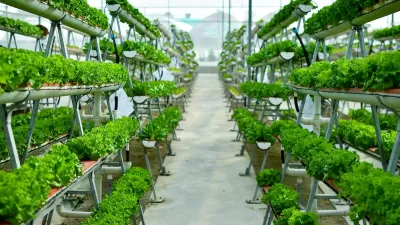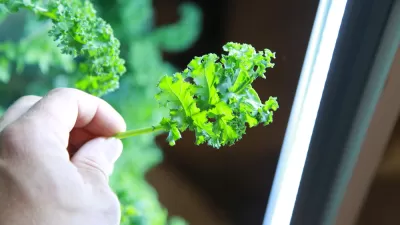Thirty-story buildings used for crop-growing is a good idea on paper, but the challenges still outweigh the benefits.
"What's needed before millions of dollars are spent to construct or renovate an existing 30-story building into a vertical farm, [Columbia University professor of public health Dickson] Despommier says, are prototypes just a few stories high. They should be built at leading agricultural universities and tinkered with until the concept is proved. 'Once it does, drive it out of the showroom and take it home,' he says.
While Despommier has won admirers around the world for his innovative thinking, skeptics still wonder how he's going to handle the problem of solar energy – bringing necessary light to the interior and lower floors of his agri-towers. 'As soon as you go vertical, you compound that problem of getting that [solar] energy to the plant,' says Gene Giacomelli, director of the Controlled Environment Agriculture Center at the University of Arizona in Tucson."
"The challenges also include finding and training indoor 'farmers' who can operate what is likely to be a complex system. 'There's nobody at the moment,' Giacomelli says. The technical problems aren't insurmountable – crops are being grown indoors at the South Pole, albeit at great expense, he says. But, he adds, 'There are many more ways to fail [at indoor agriculture] than to grow a crop correctly and succeed.'"
FULL STORY: Cities may sprout vertical farms

Trump Administration Could Effectively End Housing Voucher Program
Federal officials are eyeing major cuts to the Section 8 program that helps millions of low-income households pay rent.

Planetizen Federal Action Tracker
A weekly monitor of how Trump’s orders and actions are impacting planners and planning in America.

Ken Jennings Launches Transit Web Series
The Jeopardy champ wants you to ride public transit.

Rebuilding Smarter: How LA County Is Guiding Fire-Ravaged Communities Toward Resilience
Los Angeles County is leading a coordinated effort to help fire-impacted communities rebuild with resilience by providing recovery resources, promoting fire-wise design, and aligning reconstruction with broader sustainability and climate goals.

When Borders Blur: Regional Collaboration in Action
As regional challenges outgrow city boundaries, “When Borders Blur” explores how cross-jurisdictional collaboration can drive smarter, more resilient urban planning, sharing real-world lessons from thriving partnerships across North America.

Philadelphia Is Expanding its Network of Roundabouts
Roundabouts are widely shown to decrease traffic speed, reduce congestion, and improve efficiency.
Urban Design for Planners 1: Software Tools
This six-course series explores essential urban design concepts using open source software and equips planners with the tools they need to participate fully in the urban design process.
Planning for Universal Design
Learn the tools for implementing Universal Design in planning regulations.
Ada County Highway District
Clanton & Associates, Inc.
Jessamine County Fiscal Court
Institute for Housing and Urban Development Studies (IHS)
City of Grandview
Harvard GSD Executive Education
Toledo-Lucas County Plan Commissions
Salt Lake City
NYU Wagner Graduate School of Public Service





























